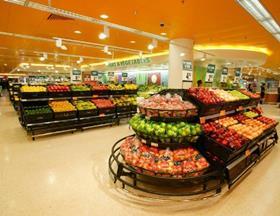
China’s QKL, a leading northeastern regional retail chain,revealed continued same-store growth and increased revenue and profits in itsfinancial results for the quarter ended June 30, published yesterday.
The company’s second quarter revenue increased by 29.5 percent to US$66.1m over the year-earlier period thanks to new store openings,while quarterly same store sales were up by 13.9 per cent and gross profit rose27.8 per cent to US$11.6m.
QKL chairman and CEO Zhuangyi Wang said the company’s salesperformance in the second quarter continued its long-term trend of strongquarterly same store sales growth.
“Operating expenses were generally in line with where weexpected them to be given our store expansion efforts in the coming months,” headded. “The opening of our new 19,600m2 distribution centre in the secondquarter should result in future gross margin growth by facilitating ourexpansion of direct grocery and non-food purchases from manufacturers, thegrowth of our private label business and larger purchases of a wider variety offruits and vegetables from local farmers.'
The retailer, which currently operates over 30 stores innortheast China, will press ahead with scheduled expansion plans, Mr Wang said.
'We remain comfortable with our goal of opening 20 newstores in 2010. By year end, we expect to have a total of 55 stores occupyingan aggregate of 260,000m2,” he revealed.
“The majority of the new stores expectedto open in the second half of this year are hypermarkets. As these new storescome online in the second half of the year, particularly in the fourth quarter,we expect to see significant revenue increases as compared to the prior yearperiod,' he added.
“We remain highly optimistic about the long-term growth,sustainability and profitability of our business and believe QKL Stores hasquickly established itself as a leading supermarket retail chain in thenortheast China region.'
Based in Daqing, China, QKL Stores sells a broad selectionof merchandise, including groceries, fresh food, and non-food items, throughits retail supermarkets, hypermarkets and department stores; the company alsohas its own distribution centres that service its supermarkets.






No comments yet